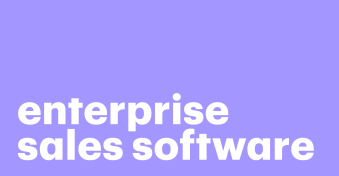As a manufacturer facing a hyper-competitive market and the ever-changing demands of your customer base, we’re certain you don’t want to wait for prospects or established customers to tell you directly what they want and need.
You can’t afford to!
You require access to a tool that manages customer interactions and provides real-time data on leads, sales forecasts, actual sales and service, and aligns all ops to help you make accurate predictions on products most in demand in the upcoming months.
This is where dedicated CRM (customer relationship management) software tailored to the needs of the manufacturing sector comes into the picture.
Key takeaways
- Best for pipeline management: Pipedrive CRM
- Best for user-friendly interface and marketing automation: HubSpot CRM
- Best for comprehensive ERP integrations and automation: NetSuite
What is a manufacturing CRM?
In the context of manufacturing, CRM systems help businesses efficiently process orders, manage their inventory and supply chain, and enable quality control for the products they make.
Like other CRM solutions in general, the software helps marketing and sales teams establish and manage interactions, and continuously improve customer service, with additional capabilities that stretch far beyond these two business domains.

How CRMs benefit manufacturers
The key goal of a manufacturing CRM is to serve as a single source of business intelligence.
For manufacturing companies, this data centralization enables the following:
1. Supply chain visibility and dealer and distributor management
Deploying a CRM into your manufacturing business allows you to gain transparency into the supply chain products or raw materials coming in.
The increased visibility allows manufacturing firms to effectively manage production schedules and inventory levels — and benefit from procuring more materials at the right time in anticipation of upcoming sales cycles.
2. Personalized customer experience
Using AI-powered third-party or built-in tools in your CRM allows sales teams to tailor production, collaboration, and services based on detailed customer data.
This includes the customer’s purchase history, buying behavior, preferences, and needs.
Aside from dramatically improving satisfaction and loyalty, this also drives a more personalized experience, letting your customers stop feeling like they are just another “sale.”
3. Forecasting and production planning
Optimized CRM software helps manufacturing firms forecast user demands and revenue growth according to the established deal pipeline and sales data.
The CRM collects all the customer data and uses in-built analytics to make precise predictions about what products your customers may want and when you will need to have them ready.
This helps to prevent delays and overproduction.
4. Sales growth
CRM solutions act as a centralized data hub, enabling teams to always have instant and real-time access to customer information.
This, in turn, fosters omnichannel communications with both prospects and customers, allowing you to quickly respond to prospects’ queries and proactively personalize strategies.
Features to look for when choosing a manufacturing CRM
Your ideal manufacturing CRM will contain industry-specific features, such as:
Contact and lead management
Having a diverse customer base of distributors, wholesalers, and end-users requires instant access to centralized data repositories.
Information like communication history, contact details, and client preferences should be stored and easily tracked within one digital space for transparency and efficient communication.
Pipeline management
Since a manufacturer’s sales process usually involves multiple stages from lead generation to orders being produced, having effective sales pipeline management within CRM helps get a transparent view of the entire process.
Teams can track leads throughout each stage, monitor deal progress, identify potential bottlenecks, and allocate resources accordingly.
Customizable dashboards and reporting
Being able to tailor a CRM dashboard is essential for your manufacturing business.
Doing so enables teams to identify and track the key CRM metrics for your firm.
Real-time analytics and reporting features help prevent unnecessary spend, giving you insights into data-driven decisions and growth opportunities.
Automation
Choose CRM software that reduces manual tasks and repetitive human input by way of workflow automation.
Seek out features like notifications and alerts, automatically scheduling meetings, customer call tracking, and customizable automated follow-ups.
Mobility and accessibility
In a world where the majority of tasks are performed through phones rather than laptops, you want your CRM to be mobile-friendly and easily accessible on the go.
This helps your team have real-time access to all functionalities, including automated workflows, data updates, and providing customer support.
Integration options
Processes within manufacturing firms vary, so a CRM software’s built-in features don’t always fulfill specific needs.
Look for a CRM that has a rich integration set so you won’t need to constantly switch between apps.
The most common integrations for manufacturing CRMs today are PandaDoc, Gmail, Slack, and various accounting and logistics software.
Best manufacturing CRMs
Let’s now quickly review three popular choices for manufacturing CRMs, their pricing plans, and straightforward pros and cons to consider when choosing the right tool for your manufacturing business.
Pipedrive CRM
Pipedrive CRM has a simple user interface and is known to be effective in managing the sales pipeline.
Even though Pipedrive wasn’t originally designed specifically for the manufacturing domain, its healthy set of features and flexibility make it a viable option for this industry.
By offering pipeline and contract management, deal tracking, sales automation, and a vast integration ecosystem, Pipedrive helps streamline manufacturing processes and improve customer management.

Pricing: Pipedrive has a 14-day free trial. The paid plan starts from $14 per seat per month.
Pros:
- Visual pipeline management;
- Customization options;
- Cost-effectiveness;
- Automation options;
- A free trial is available with no card required;
- Supports most common integrations.
Cons:
- Limited reporting and analytic features;
- Dependency on integrations;
- May require technical expertise when setting up complex, customized workflows.
HubSpot CRM
HubSpot is one of the leading CRMs, thanks to its rich set of tools for lead generation and tracking.
Manufacturing businesses use HubSpot to foster strong relationships with distributors and retailers, easily segment leads based on customized factors, and leverage the built-in AI feature for personalized marketing.
HubSpot boasts an integration set of over 100 of the must-have apps and web services different firms may need — including full integration with PandaDoc, which our users find extremely useful.
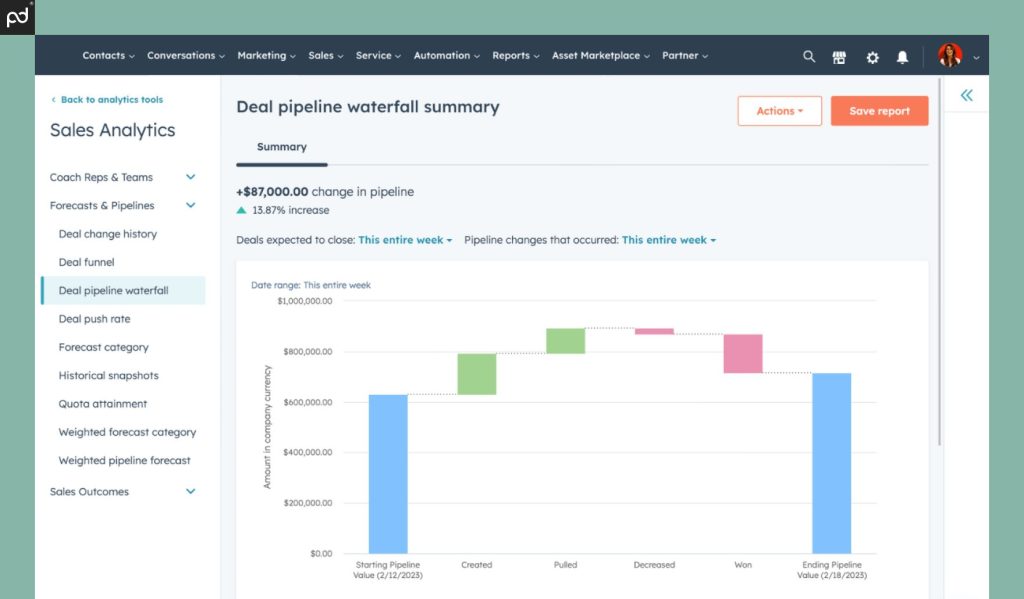
Pricing: HubSpot has a free version available, though advanced and industry-specific features come only with a paid plan.
The price currently starts at $20/month/per seat, though it is reduced to $15/month/seat if paid annually.
Pros:
- User-friendly interface;
- Marketing automation, analytics, and reporting tools;
- Has key manufacturing integrations;
- Easy to set up.
Cons:
- Cost;
- Customization limitations.
NetSuite
NetSuite for the manufacturing industry combines an enterprise resource planning (ERP) platform and a cloud-based CRM.
Packed with a majority of industry-specific tools, NetSuite supports key manufacturing use cases like managing supply chains, procurement, and orders, as well as complete contract lifecycle management.
This CRM also has reporting and automation features like customer service and marketing automation.
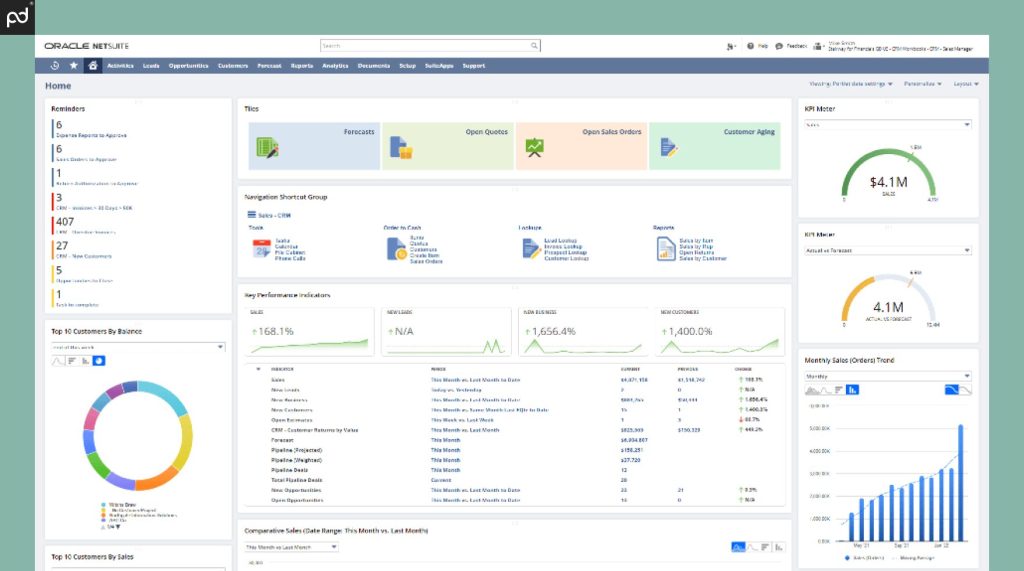
Pricing: NetSuite has a free trial. The paid tiers pricing varies from $99.00 to $999.00 per month depending on the plan.
Pros:
- Rich native integrations like ERP, financials, e-commerce, and more;
- Customization and flexibility;
- Automation features;
- Robust reporting and analytics.
Cons:
- Complex to use;
- High subscription costs;
- Dependency on the NetSuite inner ecosystem;
- Lack of support and documentation.
How to set up a manufacturing CRM system
Create a map of your customer journey
Use your existing sales pipeline to map a desired customer journey and transfer it into a CRM.
You can either include all the steps or implement a CRM in approximately half of the sales process steps.
While the choice is up to you, we recommend first identifying where CRM will be most helpful.
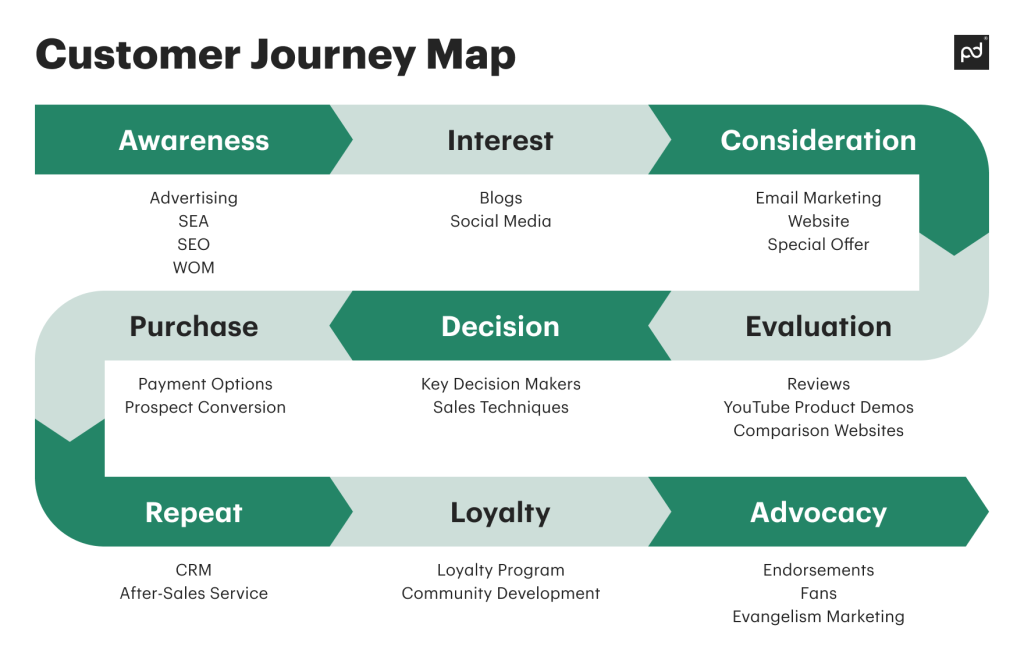
Customize your stages, fields, and pipeline
Once the process is mapped in the CRM, it’s time to start tailoring all the required fields to your team’s needs.
Here are a few useful tips to apply:
- Create a custom field for each customer to store data separately.
- Filter each group of parties involved in the process so you have performance targets.
- Import contracts based on their role and importance.
- Create a visually appealing pipeline that represents all stages of the sales process.
- Do not overcomplicate this process.
Centralize your customer data
Data import is one of the most time-consuming steps when setting up your manufacturing CRM systems.
Here are some useful tips to know before and during migration:
- Ensure there are no duplicates and standardize formats for consistency. The most common format is .csv files.
- Establish a clear structure for organizing data within the CRM. You may want to categorize customers by location, industry, and purchase history as an example.
- Implement security measures to ensure the safety of customer information and prevent unauthorized access.
Integrate other tools into your CRM
Integrating your CRM with other solutions helps you stay within one ecosystem for all your daily tasks, reducing the need to constantly switch between apps and monitor changes in each one.
Depending on the CRM you choose, you likely want to integrate it with the following tools:
- PandaDoc to create and send documents using a rich template library, e-sign, track document statuses and changes without leaving CRM.
- Marketo or Mailchimp to automate marketing campaigns, lead nurturing, and customer segmentation.
- Gmail or other preferred email platforms to maintain a comprehensive record of email interactions with customers and prospects.
- Shopify, WooCommerce, or Magento to sync order and product information between the CRM and online storefronts.
For example, this is how Pipedrive and PandaDoc integration might look like:
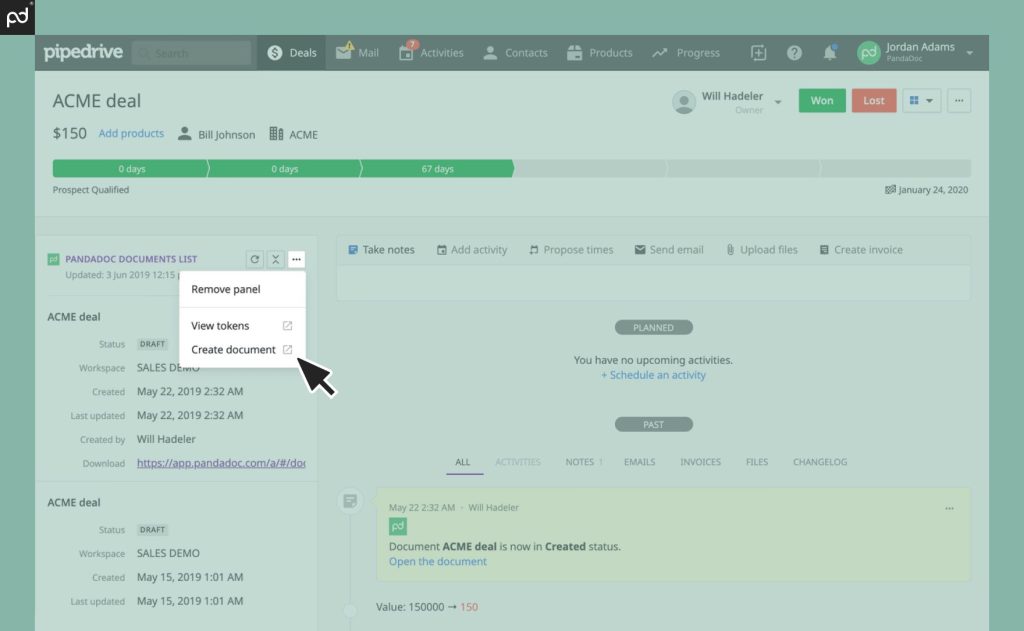
Onboard team and assign roles
Invite your team members using emails so they can access the CRM.
At this stage, you may also want to assign specific user roles and permissions according to their position within the firm.
Not everyone should have access to edit or upload new data, so make sure you have clear guidelines and that each team member knows their role within the system.
Final thoughts on CRM for manufacturers
Think of a CRM as a new employee that requires onboarding for them to do their job as expected.
In an ideal world, choosing the right CRM is the simplest step, so make sure you have some time to migrate data and train your team.
Properly established CRM systems help streamline communication, provide a personalized user experience, increase retention, and automate routine tasks.
And don’t forget to expand the CRM functionality with supported integrations.
Schedule a demo to learn more how PandaDoc integrates with Pipedrive, HubSpot, and several other CRMs, allowing users to create, send, e-sign, and track document changes right in the CRM.
